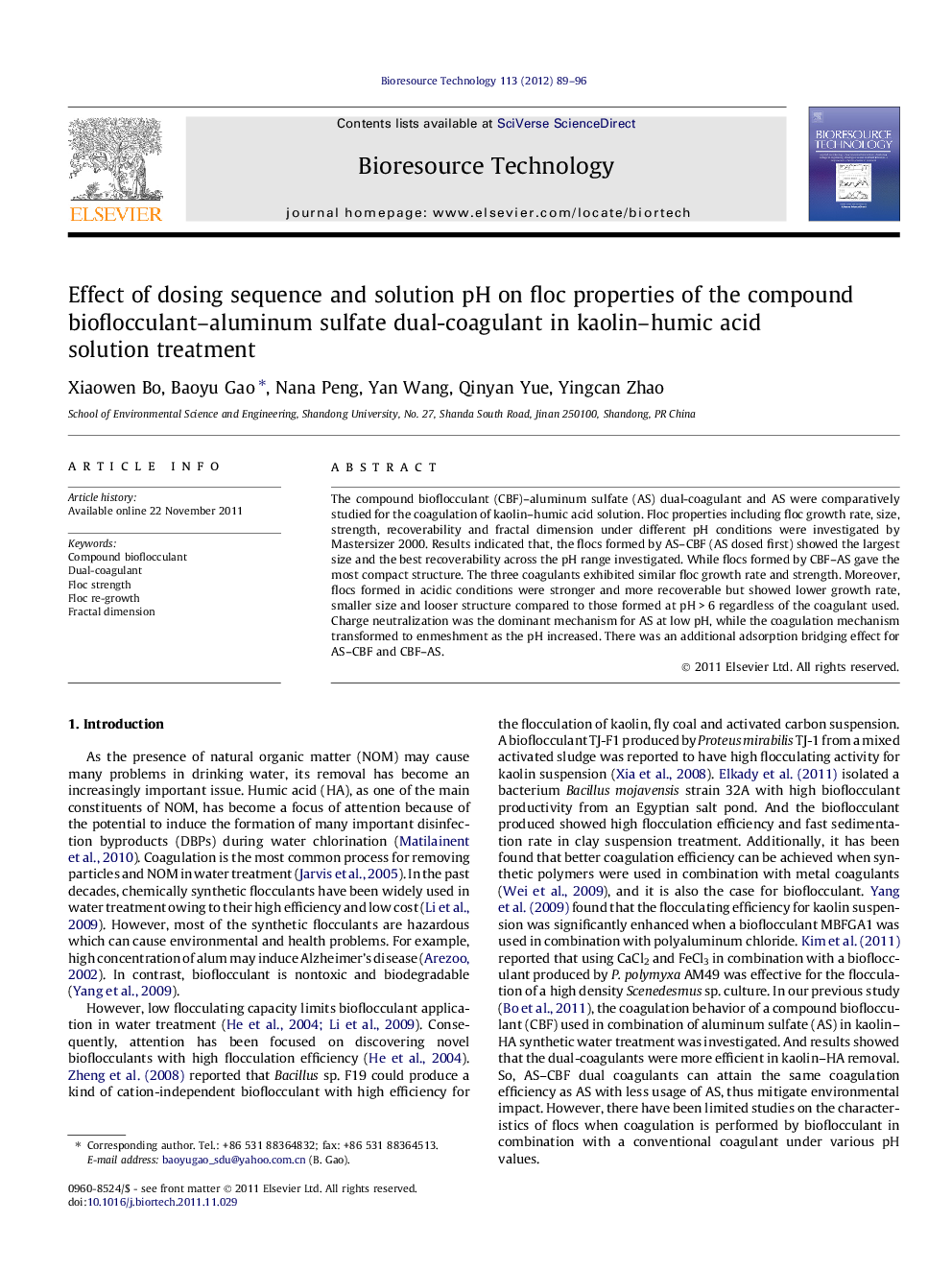| Article ID | Journal | Published Year | Pages | File Type |
|---|---|---|---|---|
| 681453 | Bioresource Technology | 2012 | 8 Pages |
The compound bioflocculant (CBF)–aluminum sulfate (AS) dual-coagulant and AS were comparatively studied for the coagulation of kaolin–humic acid solution. Floc properties including floc growth rate, size, strength, recoverability and fractal dimension under different pH conditions were investigated by Mastersizer 2000. Results indicated that, the flocs formed by AS–CBF (AS dosed first) showed the largest size and the best recoverability across the pH range investigated. While flocs formed by CBF–AS gave the most compact structure. The three coagulants exhibited similar floc growth rate and strength. Moreover, flocs formed in acidic conditions were stronger and more recoverable but showed lower growth rate, smaller size and looser structure compared to those formed at pH > 6 regardless of the coagulant used. Charge neutralization was the dominant mechanism for AS at low pH, while the coagulation mechanism transformed to enmeshment as the pH increased. There was an additional adsorption bridging effect for AS–CBF and CBF–AS.
